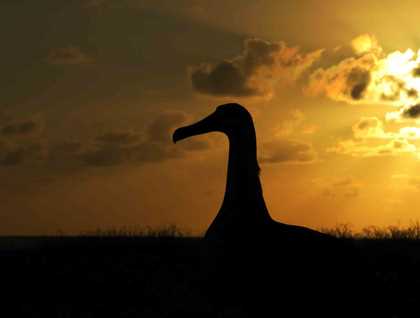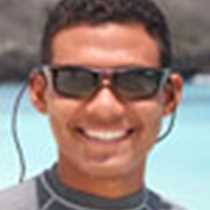Today, our first full day of exploration, we got the chance to travel in time to a place that resembles the state of nature that existed before humans arrived. Espanola is the oldest island in Galapagos and it is located in the southeast of the archipelago. The creatures here are ecologically naïve and let you become part of their daily routine for at least a couple of minutes.
Espanola was formed by a volcanic eruption millions of years ago and its lava slowly reached the water and transformed the amazing coral reefs into wonderful beaches. Gardner Bay has the most beautiful beach on this island and the biggest breeding sea lion colony. Our guests had the chance to swim with baby sea lions and walk with them and watch them being fed by their mommies, who have returned after days of fishing out in the open sea.
In the afternoon, the National Geographic Endeavour motored to the western coast of Espanola for the last activity of the day. Punta Suarez is renowned for the number of bird species you can encounter while you walk. It is also the only place in the world where the waved albatross can be found on land, where it breeds massive size chicks. Fortunately we arrived at the right time of year to see them, just before they migrate to other parts of the Pacific Ocean. But Punta Suarez not only hosts albatrosses. There are also boobies, mockingbirds, iguanas, gulls, hawks and finches.
At the end of the day, everybody came back to the ship with a big smile. What a great expedition we had today, and it is only the beginning.







